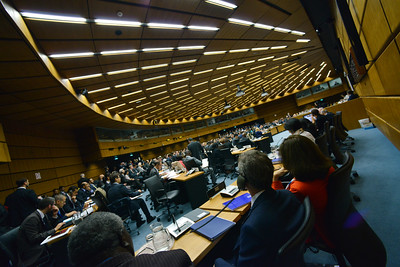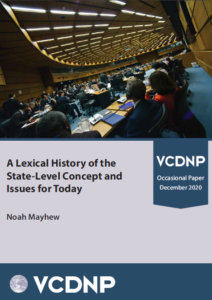Nuclear safeguards implemented by the International Atomic Energy Agency (IAEA) have undergone significant evolution since the IAEA’s founding in 1957. Sometimes that evolution occurred in periods of relative calm, and at other times amid tensions. Prompted by the discovery of Iraq’s clandestine nuclear weapons programme and anomalies in North’s Korea’s safeguards declarations, the IAEA’s Programme 93+2 set on the task of strengthening safeguards. This process yielded the Model Additional Protocol and continued with the introduction of integrated safeguards in 2002.
A key aspect of this shift was a marked increase in the emphasis placed on viewing a State’s nuclear activities and capabilities as whole, rather than focusing on individual facilities and activities declared to the IAEA. This “State-level” practice was first referred to as the State-level concept (SLC) in 2005 - a natural evolution of strengthening safeguards. While the development of the SLC proceeded for years without raising concerns by Member States, in 2012 it suddenly became the focus of heated discussions between Member States and the IAEA. In these discussions, it became clear that many did not understand how the SLC had been developed, how it was being implemented and what kinds of information were driving it. While the tension surrounding the SLC has waned somewhat, the IAEA’s focus on the State as a whole remains central to its implementation of safeguards.
Eight years after this intensive dialogue about the SLC started, VCDNP Research Associate Noah Mayhew tells the story of the SLC with a novel approach. Mr. Mayhew recounts the evolution of safeguards at the State level from the perspective of safeguards terminology - or lexicon - to explain why it is that experts talk about safeguards in the way that they do. What is the IAEA's "broader conclusion" and how did this term come into being? What is the difference between the SLC and a State-level approach? What are "State-specific factors" and how are they utilized?
Mr. Mayhew addresses these and more questions related to the evolution of safeguards in this Occasional Paper, which aims to demonstrate, in a neutral way, how the SLC came into being and, by telling the story in lexical terms, enhance understanding of it. Key takeaways from the research include:
- The critical importance of clear communication. The consultations conducted with Member States on safeguards and other work critical to the IAEA must be as explicit, transparent and frequent as possible.
- Understanding the division of labour. While the IAEA works at the service of its Member States, the technical work of implementing safeguards has always been entrusted to the IAEA. Member States can and should influence that work in policy decisions while understanding that the IAEA must be able to develop the technical aspects of safeguards as circumstances demand.
- Taking stock of Member State perspectives. The IAEA must regularly take stock of Member States’ views not only to ensure that it is acting objectively, equitably and non-discriminatorily, but also to ensure that it is seen to be acting objectively, equitably and non-discriminatorily by all Member States.
- Robust education and training in safeguards history. The topic of safeguards has a complex history, made up of institutions more than five decades in the making. Diplomats - the IAEA's interface with its Member States - cycle in and out of missions in Vienna on a regular basis. In many cases, these diplomats cover not only safeguards matters, but all of the IAEA file and their missions' files for other international organisations. As such, robust education and training on safeguards should be a priority.
Feature image courtesy of Dean Calma / IAEA.


